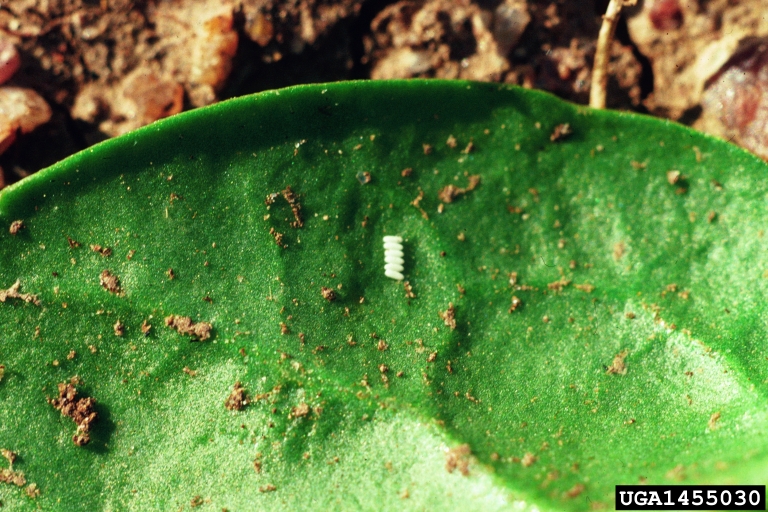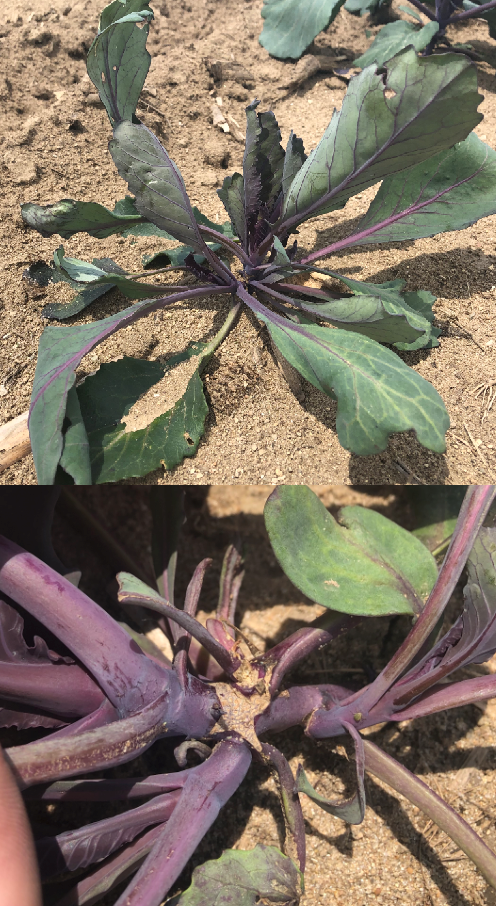Southeast Michigan vegetable update – June 12, 2019
All hands on deck! Last week’s weather finally allowed for widespread field activity and planting. Insects and disease are on the move as well.

Weather
After a burst of productive, sunny days, Sunday, June 9, brought a steady rain into our region, with higher amounts of precipitation falling in more northern areas. June will likely end up wetter than normal. Mostly more of the same in the short term (next couple of days) and medium term (seven to 10 days). Thursday, June 12, will be a cool, wet day, and the weekend will also have a chance of rain. The next week will bring below normal temperatures to our region. At the Deerfield Enviroweather station, we have only had six days with temperatures above 80 degrees Fahrenheit this growing season.
The table below shows rainfall totals for the Michigan State University Enviroweather stations in southeast Michigan, as well as degree-days calculated using the Baskerville-Emin Method. Degree-day average for Commerce and Hudson is over five years, while Deerfield is over two years. Rainfall is in inches, with number in parenthesis indicating rainfall since the last report. For a refresher on degree-days and how to get this information in your area, see “Accessing growing degree days with Enviro-weather” from MSU Extension.
|
Rainfall and degree day totals as of June 12 |
||||
|---|---|---|---|---|
|
Station |
Degree days (base 42) |
Degree days (base 50) |
5-year degree day average (base 50) |
Rainfall since April 1 |
|
Commerce |
876 |
455 |
596.9 |
9.67 (+1.33) |
|
Deerfield |
1018 |
550 |
735 |
11 (+0.33) |
|
Hudson |
924 |
494 |
657.9 |
10.54 (+0.83) |
Crop reports
Asparagus harvest is wrapping up on some farms.

I’ve gotten some calls about leafminers in beets. Spinach leafminer can attack beets and spinach, as well weeds like lambsquarters and pigweed. In beets, the mines make the leaves less appealing when bunched, but plants with more than eight leaves should be able to tolerate damage from average leafminer populations. There are multiple generations a year, with larvae living in leaf mines for seven to 12 days, then dropping to the soil to pupate. The next generation of flies emerges after 10-20 days.
Once in the leaf, little can be done, but you can work to reduce the damage from subsequent generations. First, if things warm up, the weather will be in your favor, as this pest does better when it is cool out. Control the weed hosts to reduce populations. If you’re seeing lots of damage and considering a treatment for future generations or at this time next year, timing will be key. Your treatment window is between egg laying and when that egg hatches and the larva burrows into the leaf. Scouting for eggs, which look like small (1 millimeter) grains of rice laid in a row, can cue you in to when you should apply a treatment.
For a list of both organic and conventional products, see the Northeast Vegetable Management Guide (you will have to scroll down).
Cabbage planting is ongoing. For all cole crops, note that the sunny, warm days of the last week promoted egglaying in imported cabbage worms, though diamondback moth is still the main caterpillar I’ve been seeing. Aphids are also present in low numbers.

I’ve also seen some damage from swede midge. If you see patches of plants with misshapen leaves and multiple growing points, take a closer look at the base of that plant. If you see brown, corky scarring, it is possible swede midge larvae were feeding on the growing point (see picture). The larvae that caused the damage are gone, but it is likely they’re now adult midges laying eggs. Spray programs for caterpillar pests should control future generations.
Cucumbers on plastic are vining out and flowering. No downy mildew spores have been caught in our area to date.
Garlic scapes are being harvested.
I’ve been in some green bean plantings with high levels of bean leaf beetle feeding. Beetles can be anywhere from rusty red to pale yellow, and often have block spots. The key identifier is a black triangle behind their head. The threshold for these beetles is one beetle per foot of row, and treatments should be targeted at the damaged areas.
Peppers are being planted. Cool soils have really slowed pepper growth, even for those on black plastic. The wet weather and saturated soil are creating favorable conditions for phytophthora movement and infection. On raised beds, fungicides can be used in the dripline with good efficacy. If you are growing on black plastic in a field with a history of phytophthora, now is a good time to give the plants some protection through the dripline. For a listing of products, see MSU plant pathologist Mary Hausbeck’s “Managing Phytophthora in Pepper.”
For processing peppers and other peppers on the bare ground, research has shown that foliar applications of fungicides do nothing to stop or slow phytophthora. This includes sprays directed as the base of the plant, even those done via backpack sprayer. The best chance you have at getting some control in these situations is at transplanting because it takes a treatment with soil saturation to get protection. Omega 500F has a label for use as a transplant drench, and Orondis Gold 200 has a label for use in transplant water. This protection will hopefully carry the planting until soils are less saturated. For more information on phytophthora in peppers, see Hausbeck’s “Managing Phytophthora in Pepper.”
Pumpkin planting has begun. Get herbicides on before plants emerge, which may be quick if soils are warm in your area. See my May 22 report for a pumpkin herbicide rundown.
Many farms are on the cusp of their first strawberry harvest. For information on strawberry management, see MSU Extension educator Bob Tritten’s “East Michigan fruit update from June 11.”
Sweet corn is looking yellow in some spots. The cool, wet conditions both limit nutrient uptake and promote leaching. Some extra N at sidedress can help. We have also had some windy days with blowing sand in some fields. This damage, combined with wet weather, promotes smut infection. Keep an eye out for smut later in the growing season, as this disease needs to enter the plants early in the season via wounds. Some varieties are more resistant of smut than others.
Field crop note
If you are prevented from planting all your field crop acres, the MSU Extension field crops webpage has useful information on weed control and cover crops in these fields. They also have a good collection of information on considerations for delayed planting.
Meetings
The 2019 MSU Weed Tour is scheduled for June 26. Learn about herbicide programs and see research plots during this field day in East Lansing, Michigan.
Mark your calendar! The 2019 Great Lakes Fruit, Vegetable, and Farm Market EXPO is scheduled for Dec. 10-12 in Grand Rapids, Michigan. We have great speakers coming in from across the country to address the production, labor and marketing issues affecting Michigan vegetable growers.
Reach out
Contact me at schuhmar@msu.edu or at 517-264-5309 with to schedule a farm visit or ask a question.



 Print
Print Email
Email



